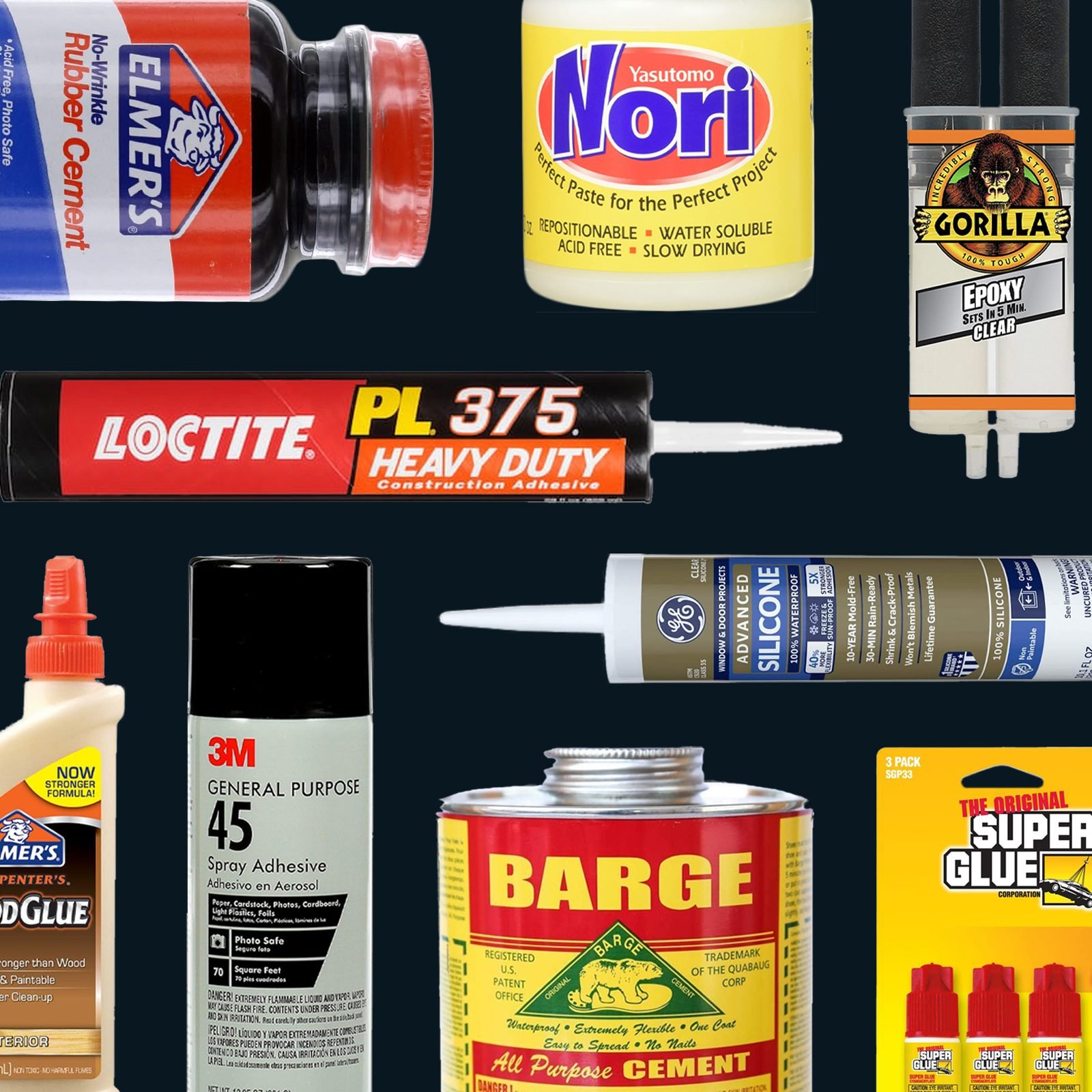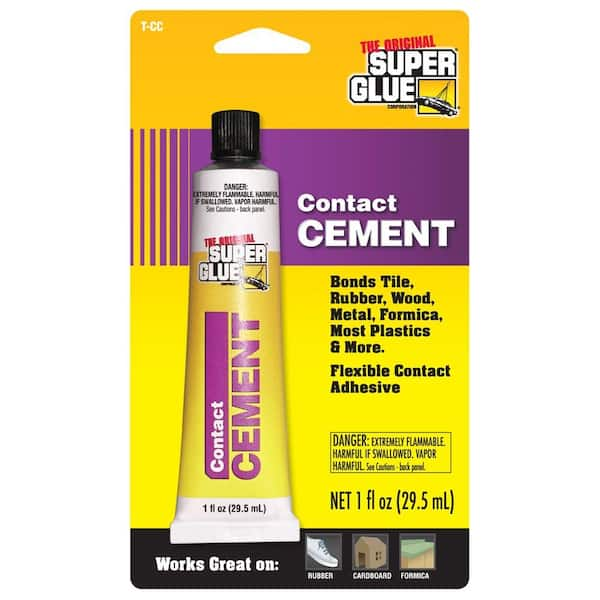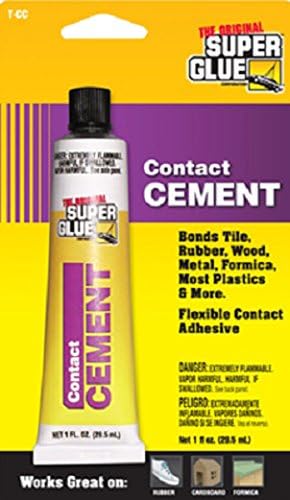Contact adhesive bonds two surfaces together, while super glue creates a strong, instant bond. Contact adhesive is ideal for large surface areas, while super glue is better for small, precise bonding.
Both have their unique strengths and are suitable for different applications. Contact adhesive requires time to set and is more flexible, making it great for materials that need to move. On the other hand, super glue dries quickly and forms a rigid bond, perfect for quick fixes and small projects.
Understanding the differences between these adhesives will help you choose the right one for your specific needs.
Introduction To Adhesive Wars
Contact adhesive and super glue are two popular types of adhesives used in various applications. Contact adhesive, also known as contact cement, is a strong adhesive that bonds quickly and firmly. It is commonly used for bonding materials such as wood, metal, plastic, and fabric. Contact adhesive works by applying it to both surfaces to be bonded and allowing it to dry before pressing them together.
Super glue, on the other hand, is a fast-acting adhesive that forms an instant bond when in contact with moisture. It is commonly used for bonding materials such as glass, ceramics, rubber, and certain plastics. Super glue is applied sparingly to one surface, and when the two surfaces are pressed together, the adhesive cures rapidly, creating a strong bond.
Both contact adhesive and super glue have their advantages and limitations, and the choice between them depends on the specific project requirements. Understanding the basics of these adhesives can help in making the right selection for your application.

Chemical Composition
Comparing the chemical composition of contact adhesive and super glue reveals distinct bonding properties. Contact adhesive contains more rubber-based compounds for flexible connections, while super glue is cyanoacrylate-based, offering quick and rigid adhesion. Each adhesive’s unique composition dictates its ideal usage based on the bonding requirements.
| Ingredients in Contact Adhesive | What Makes Super Glue Stick |
| Contact adhesive typically contains synthetic rubber, resins, and organic solvent as key components. | Super glue, also known as cyanoacrylate adhesive, creates bonds through a process called polymerization. |
| These elements enable it to form a strong, long-lasting bond with various materials. | The adhesive reacts with the moisture present on the surface to solidify rapidly. |
| It is commonly used for bonding wood, plastic, metal, and fabric. | This rapid curing process makes it a quick and effective choice for various applications. |
Application Techniques
When it comes to adhesive options, contact adhesive and super glue are two popular choices. Both have their own unique application techniques.
Applying contact adhesive involves applying a thin, even layer to both surfaces being bonded. Allow the adhesive to dry until it feels tacky to the touch before pressing the surfaces together. This technique is commonly used in woodworking, laminating, and other applications where a strong, permanent bond is desired.
On the other hand, super glue is ideal for quick fixes and small repairs. It works best on clean, dry surfaces. Apply a small amount of glue to one surface and press the surfaces together firmly. Super glue bonds quickly, so make sure to align the surfaces correctly before joining them.
Remember, contact adhesive provides a strong, long-lasting bond, while super glue is perfect for instant repairs. Choose the adhesive that best suits your specific needs and follow the application techniques for optimal results.

Bonding Strength And Durability
When it comes to bonding strength and durability, it’s crucial to understand the differences between contact adhesive and super glue. Contact adhesive offers strong bonding due to its ability to adhere to a variety of materials, including wood, metal, and plastic. On the other hand, super glue provides exceptional holding power and can create a durable bond on surfaces such as ceramics, glass, and metal. Both adhesives have their unique strengths, making them suitable for different applications based on the specific bonding requirements.
Setting Time And Curing
Contact adhesive and super glue differ in their setting time and curing process. Contact adhesive requires applying to both surfaces and allowing it to become touch dry before joining, while super glue bonds instantly upon contact. The curing of contact adhesive takes longer, providing more repositioning time, whereas super glue cures rapidly, forming a strong bond swiftly.
| Contact Adhesive Drying Time | Super Glue Curing Speed |
| Contact adhesive typically dries within 15-30 minutes, but full curing may take 24 hours. | Super glue sets in seconds, and fully cures within 24 hours, depending on the materials bonded. |

Versatility And Material Compatibility
Contact adhesive offers versatility and material compatibility, making it suitable for a wide range of surfaces. On the other hand, super glue provides strong bonding for specific materials, such as metal, plastic, and ceramics. Understanding the differences between these two options is crucial for successful bonding in various projects.
| Contact Adhesive | Super Glue |
| Wood, Metal, Plastic | Ceramics, Glass, Leather |
| Flexible bond | Rigid bond |
Safety And Environmental Considerations
Safety and environmental considerations play a crucial role when deciding between contact adhesive and super glue. Both options have their pros and cons, but understanding the potential risks and impact on the environment is essential. It is important to prioritize safety measures and choose a product that meets both your adhesive needs and environmental standards.
| Health Risks with Contact Adhesive | Eco-Friendliness of Super Glue |
| Contact adhesive may cause skin irritation and respiratory issues if inhaled. | Super glue is generally safe and does not emit harmful fumes. |
| Proper ventilation is crucial when using contact adhesive to minimize health risks. | It is non-toxic and environmentally friendly compared to contact adhesive. |
Conclusion: Choosing The Right Adhesive
When deciding between contact adhesive and super glue, consider the specific needs of your project. Contact adhesive works well for large surface areas, while super glue is ideal for small, precise bonding. Understanding the differences will help you choose the right adhesive for your project.
| Contact Adhesive | Super Glue |
| Requires pressure to bond surfaces. | Bonds instantly without pressure. |
| Ideal for large surface areas. | Best for small, precise applications. |
| Works well on porous materials. | Works best on non-porous surfaces. |
Frequently Asked Questions
What Is The Difference Between Contact Adhesive And Super Glue?
Contact adhesive is a flexible and strong adhesive that creates a permanent bond between two surfaces. Super glue, on the other hand, is a fast-drying adhesive that creates a strong bond between two surfaces but is not flexible.
Can I Use Contact Adhesive Instead Of Super Glue?
Yes, you can use contact adhesive instead of super glue, but it depends on the surfaces you want to bond. Contact adhesive is ideal for bonding large surfaces, while super glue is ideal for bonding small surfaces.
Which Is Stronger, Contact Adhesive Or Super Glue?
Both contact adhesive and super glue are strong adhesives, but contact adhesive is stronger. It creates a permanent bond between two surfaces, and it is flexible, making it ideal for bonding materials that experience movement or vibration.
Can I Use Contact Adhesive On Plastic?
Yes, you can use contact adhesive on plastic. However, you need to make sure that the adhesive is compatible with the type of plastic you want to bond. Some plastics may require special adhesives to achieve a strong and lasting bond.
Conclusion
Both contact adhesive and super glue have their unique features and are used for different purposes. Contact adhesive is ideal for bonding larger surfaces, whereas super glue is suitable for smaller and precise applications. When choosing between the two, it’s essential to consider the material you’re working with and the end-use of the bond.
Regardless of which adhesive you choose, it’s crucial to follow safety instructions and use them in a well-ventilated area. By doing so, you can achieve a strong and long-lasting bond for your projects.

